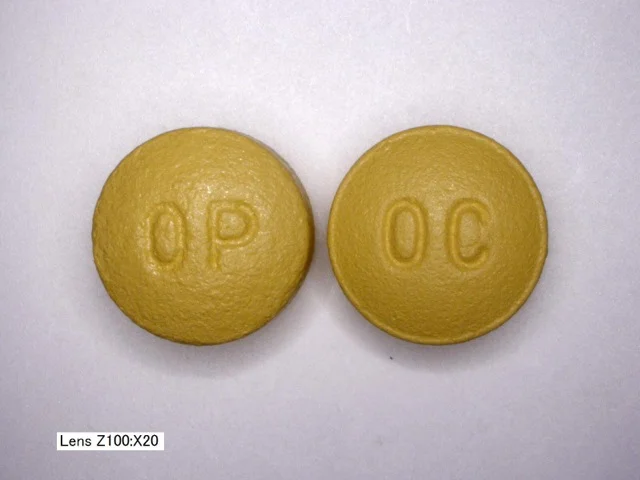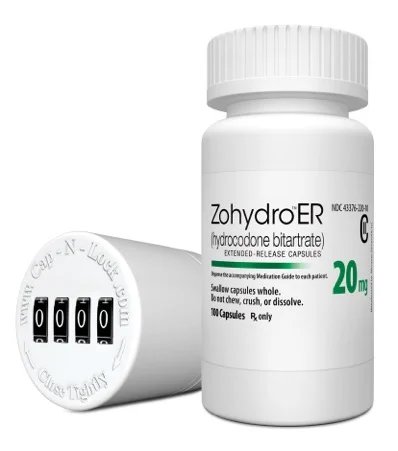Abuse Deterrence is No Deterrent
by Liz Savage, Guest Blogger Much of the backlashagainst the new prescription painkiller Zohydro has revolved around its lack of an “abuse-deterrent formulation,” which would prevent users from crushing pills into a powder to snort or inject for an immediate high that bypasses the slow-release formula. Many of Zohydro’s critics have said that they would back down if the drug’s manufacturer, Zogenix, produced a safer, less abuse-prone version.
But this apparently simple solution disguises an inherent deception.
We should not be lulled into thinking that abuse-deterrent drugs or “tamper-resistant” drugs will ease the painkiller abuse crisis.The intent of abuse-deterrent technology – to make a particular drug less appealing to addicts – will never eliminate or even significantly reduce abuse. Studies have shown that addicts will find a way to get around the deterrence, or move on to other morphine-based drugs, including heroin.
OxyContin, the only prescription painkiller to be labeled “abuse-deterrent,” continues to be abused despite its reformulation. Anyone with the motivation and time can circumvent thesedeterrence properties. A quick Google search provides detailed instructions, including inventive roundabouts like steeping the pills in soda or grinding them with a $10 animal nail trimmer.
The FDA considers the development of abuse-deterrent formulas a “high public health priority” toward the goal of safer opioid painkillers. In reality, this approach fails to address systemic problems of physician over-prescription, under-regulated pain clinics and the ubiquitous misunderstanding of how to appropriately treat musculoskeletal pain.
On the heels of Zohydro’s introduction, Purdue Pharma, the manufacturer of OxyContin, announced that it is seeking approval for a new, extended-release hydrocodone drug, which the company says has abuse-deterrent properties “designed to make the product more difficult to manipulate for the purpose of misuse or abuse by various routes of administration (e.g., chewing, snorting and intravenous injection).”
Purdue’s new drug contains the same active ingredient as Zohydro. But but it also has the abuse-deterrent properties that Zohydro controversially lacks, meaning that its approval could make it the extended-release hydrocodone option that doctors choose, effectively pushing Zohydro out of the market.
Zohydro, which the FDA approved in October, was the first extended-release hydrocodone product on the market, and received a barrage of criticism. Subsequently, the company’s stock price, which had more than doubled following Zohydro’s approval, has fallen below its pre-approval price.
The FDA first approved OxyContin in 1995. In 2010, the FDA approved Purdue’s abuse-deterrent version of that drug, one that develops a gummy consistency when crushed, making it difficult to snort or inject, and last year, the FDA allowed the drug to be labeled as “abuse-deterrent,” based on a series of studies conducted by the drug maker.
But even the FDA, in its review of the studies submitted by Purdue, noted the shortcomings of these deterrence properties. Describing a set of Purdue studies, the FDA report states, “the controlled-release properties of [the new formula] can be overcome when chewed vigorously and swallowed.” The documents acknowledge that the drug “can be crushed into a fine powder using a coffee grinder.”
An analysis of Purdue’s data by the FDA’s Division of Anesthesia, Analgesia, and Addiction Products “found that the results of these studies provided evidence of an incremental improvement in the formulation’s resistance to manipulation and approved the new formulation for marketing.” (Emphasis added) No definition of the term “incremental” was included in the analysis.
Even U.S. Food and Drug Administration Commissioner Margaret Hamburg, MD, acknowledges that there is a major problem: “I would love if we had abuse-deterrent formulation regulations that were actually effective,” Hamburg told a hearing of the Senate's Health, Education, Labor and Pensions Committee. “It does not do any good to label something as abuse-deterrent if it is not actually abuse-deterrent.”
Of course, people who swallow the pills whole, the most common way to take these drugs, whether for pain or in order to get high, are unaffected by these abuse-deterrent measures.
In 2002, long before the new version of OxyContin, a DEA report found that nearly 98 percent of 464 OxyContin-related deaths were “related to oral consumption of the drug, as opposed to snorting or injecting.” (It’s not clear whether the drugs in these cases were crushed first before being ingested.)
Purdue’s reformulation did deter some OxyContin abuse, with unintended consequences – in the form of a heroin-use epidemic among middle-class teens and people in their twenties, and in rural towns, with Appalachian states and New England among the hardest hit.
In a recent letter to the editor in the New England Journal of Medicine, researchers at Washington University in St. Louis explained, “Our data show that an abuse-deterrent formulation successfully reduced abuse of [OxyContin] but also generated an unanticipated outcome: replacement of the abuse-deterrent formulation with alternative opioid medications and heroin, a drug that may pose a much greater overall risk to public health than OxyContin.”
Even when tamper-resistant or abuse-deterrent formulations exist, the NEJM study (and common sense) suggest opioid abusers will find alternative drugs—prescription or otherwise. To ignore this fact is desperately shortsighted.



